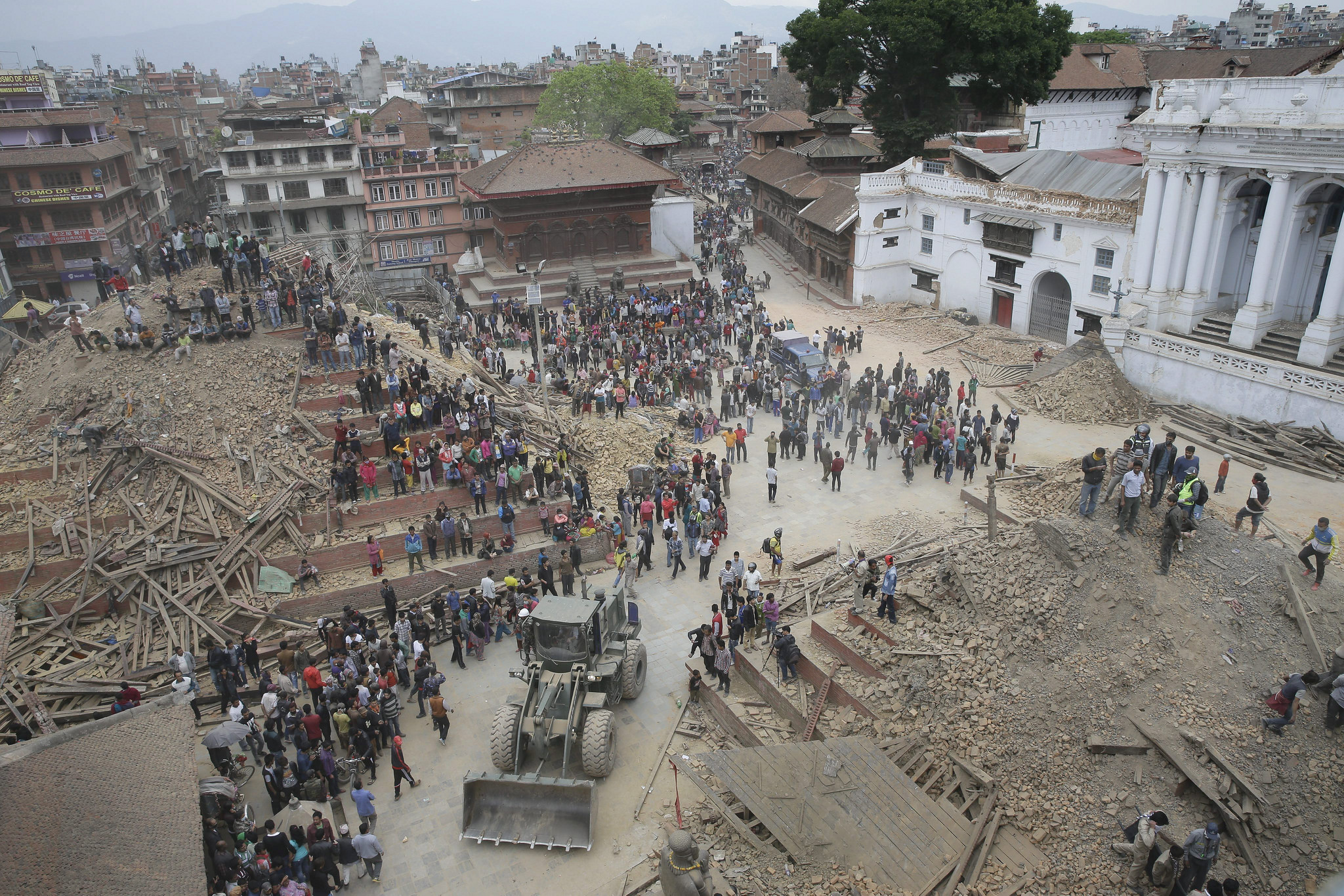Last night, as most of the Pacific timezone was headed to bed or snoozing away following the end of another workweek, a massive earthquake struck Nepal, including the capital of Kathmandu. Initially reported as a magnitude 7.5 tremblor by the U.S. Geological Survey, it was later revised to 7.8.
The quake stuck at a depth of fifteen kilometers, and the epicenter was declared to be thirty-four kilometers east southeast of Lamjung, Nepal. In the hours since, it has been succeeded by a number of powerful aftershocks.
Some background from the USGS:
The April 25th, 2015 M 7.8 Nepal earthquake occurred as the result of thrust faulting on or near the main frontal thrust between the subducting India plate and the overriding Eurasia plate to the north. At the location of this earthquake, approximately 80 km to the northwest of the Nepalese capital of Kathmandu, the India plate is converging with Eurasia at a rate of 45 mm/yr towards the north-northeast, driving the uplift of the Himalayan mountain range. The preliminary location, size and focal mechanism of the April 25th earthquake are consistent with its occurrence on the main subduction thrust interface between the India and Eurasia plates.
Although a major plate boundary with a history of large-to-great sized earthquakes, large earthquakes on the Himalayan thrust are rare in the documented historical era. Just four events of M6 or larger have occurred within 250 km of the April 25th, 2015 earthquake over the past century. One, a M 6.9 earthquake in August 1988, 240 km to the southeast of the April 25 event, caused close to 1500 fatalities. The largest, an M 8.0 event known as the 1934 Nepal-Bihar earthquake, occurred in a similar location to the 1988 event. It severely damaged Kathmandu, and is thought to have caused around 10,600 fatalities.
Damage in Kathmandu is said to be catastrophic. Many centuries-old temples and historic buildings, including a UNESCO World Heritage Site, have been reduced to giant piles of rubble, with people trapped inside.
At least 1,500 people in Nepal are thought to be dead. It’s the worst disaster that the country has seen in more than eighty years.
The quake was also felt in China and India.
In the Himalayas, avalanches triggered by the quake resulted in the deaths of several people on Mount Everest, the world’s tallest aboveground mountain.
This BBC report puts the devastation into pictures, with a number of video snippets from affected areas, including Kathmandu.
The Times of India has been liveblogging the response to the quake. Indian Prime Minister Narendra Modi has pledged to help in any way possible. India is already delivering relief supplies by air, using its fleet of cargo transports.
The White House released a statement from National Security Council spokeswoman Bernadette Meehan pledging assistance.
“The American people express deep condolences for the lives lost in today’s earthquake,” she said. “The earthquake and subsequent landslides caused widespread damage and loss of life in Nepal, India and Bangladesh. The United States is deploying a team of disaster response experts to Nepal, is providing an initial one million dollars in disaster relief assistance, and stands ready to assist the Government and people of Nepal and the region further in this time of need.”
Mercy Corps is based in the Pacific Northwest and has an excellent reputation. It is known for keeping overhead low and ensuring that dollars are transformed into aid for people who need it. Its staff have decades of expertise responding to disasters in both the short and long term and know how to organize the delivery of food, water, and shelter for those in need.

